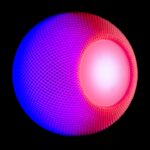Mastering Image Tests: A Comprehensive Guide to Enhancing Your Visual Evaluation Skills
In today’s data-driven world, the ability to effectively analyze and interpret visual information has become increasingly crucial. Whether you’re a professional in the tech industry, a student pursuing a career in the sciences, or simply someone who wants to sharpen their observation skills, mastering image tests can be a game-changer. In this comprehensive guide, we’ll delve into the world of image tests, exploring the latest trends, best practices, and expert insights to help you enhance your visual evaluation capabilities.
Understanding Image Tests: The Basics
Image tests, also known as visual assessment or visual perception tests, are a powerful tool used to evaluate an individual’s ability to perceive, analyze, and interpret visual information. These tests can assess a wide range of skills, including pattern recognition, spatial awareness, attention to detail, and problem-solving. By understanding the fundamentals of image tests, you can unlock a deeper understanding of your own visual processing abilities and identify areas for improvement.
The Importance of Image Tests in the Digital Age
In the digital age, where we are constantly bombarded with visual information, the ability to effectively analyze and interpret images has become increasingly crucial. From medical professionals interpreting X-rays and MRI scans to engineers analyzing technical diagrams, the demand for individuals with strong visual evaluation skills is on the rise. Image tests play a vital role in assessing and developing these essential skills, making them a valuable asset for individuals and organizations alike.
Latest Trends and Advancements in Image Tests
The field of image tests is constantly evolving, with new advancements and technologies emerging to enhance the assessment process. [INTERNAL LINK: image test latest updates] One of the most significant trends in recent years has been the integration of artificial intelligence (AI) and machine learning into image test development and analysis. These technologies have enabled the creation of more sophisticated and personalized tests, as well as the ability to provide real-time feedback and personalized recommendations for improvement.
Another trend in the world of image tests is the increasing focus on practical, real-world applications. [INTERNAL LINK: How to improve image test] Rather than relying solely on abstract patterns or geometric shapes, many image tests now incorporate more realistic scenarios and task-oriented challenges. This approach helps to better evaluate an individual’s ability to apply their visual processing skills in practical, everyday situations.
Mastering Image Tests: Tips and Strategies
[INTERNAL LINK: image test tips and tricks] Improving your performance on image tests requires a combination of practice, strategic thinking, and a deep understanding of the underlying principles. Here are some key tips and strategies to help you master image tests:
1. Develop a Strong Foundation in Visual Perception
Understanding the fundamentals of visual perception, such as pattern recognition, spatial awareness, and attention to detail, can provide a solid foundation for success in image tests. Familiarize yourself with the various cognitive processes involved in visual analysis and how they relate to the types of tasks you may encounter in image tests.
2. Practice, Practice, Practice
Consistent practice is the key to improving your image test performance. Seek out a variety of image test resources, from online platforms to professional assessments, and engage in regular practice sessions. This will help you become more comfortable with the test format, identify your strengths and weaknesses, and develop effective strategies for tackling different types of visual challenges.
3. Develop a Systematic Approach
When faced with an image test, it’s important to have a systematic approach to analyzing the visual information. Break down the task into manageable steps, such as identifying patterns, recognizing shapes and colors, and considering spatial relationships. This methodical approach can help you stay focused and organized, leading to more accurate and efficient responses.
4. Leverage Contextual Clues
In many image tests, the context of the visual information can provide valuable clues to help you arrive at the correct answer. Pay attention to any accompanying text, instructions, or background information that may inform your analysis and decision-making process.
5. Embrace Feedback and Continuous Improvement
Feedback is a crucial component of the image test learning process. Carefully review your performance, analyze any mistakes or areas for improvement, and use this information to refine your strategies and techniques. Embrace a growth mindset and continuously seek opportunities to enhance your visual evaluation skills.
The Benefits of Mastering Image Tests
Mastering image tests can unlock a wide range of benefits, both personal and professional. [INTERNAL LINK: Benefits of image test] By enhancing your visual evaluation skills, you can:
- Improve problem-solving and critical thinking abilities
- Enhance your attention to detail and observational skills
- Develop a stronger understanding of spatial relationships and pattern recognition
- Gain a competitive edge in various industries, from healthcare to engineering
- Boost your confidence and adaptability in visual-based tasks
Whether you’re aiming to excel in a specific field or simply want to sharpen your overall cognitive abilities, mastering image tests can be a transformative experience that opens up new opportunities and unlocks your full potential.
Choosing the Right Image Test for Your Needs
[INTERNAL LINK: How to choose image test] With a wide range of image tests available, it’s important to select the one that best aligns with your goals and requirements. Consider factors such as the specific skills being assessed, the test format, the level of difficulty, and the intended use of the results. Consulting with experts or reviewing comprehensive guides can help you make an informed decision and ensure that you choose the right image test for your needs.
Overcoming Common Image Test Challenges
[INTERNAL LINK: Common image test problems] While image tests can be a powerful tool for evaluating and enhancing visual processing skills, they can also present some common challenges. These may include time pressure, distractions, or the need to interpret complex visual information. By understanding these potential pitfalls and developing strategies to overcome them, you can improve your performance and achieve greater success in image test scenarios.
Image Tests for Beginners: Getting Started
[INTERNAL LINK: image test for beginners] If you’re new to the world of image tests, the prospect of tackling these assessments can be daunting. However, with the right approach and resources, you can build a solid foundation and gradually work your way up to more advanced image tests. Start with beginner-friendly exercises, focus on developing core visual processing skills, and don’t be afraid to seek guidance from experienced professionals or educational resources.
Conclusion: Unlocking the Power of Image Tests
In today’s data-driven and visually-oriented world, the ability to effectively analyze and interpret images has become a valuable asset. By mastering image tests, you can unlock a deeper understanding of your visual processing capabilities, identify areas for improvement, and position yourself for success in a wide range of personal and professional endeavors. With the insights and strategies outlined in this comprehensive guide, you are well on your way to becoming an image test expert, ready to tackle any visual challenge that comes your way.
Remember, the journey to mastering image tests is an ongoing one, filled with opportunities for growth and self-discovery. Embrace the process, stay curious, and continuously strive to enhance your visual evaluation skills. The rewards of this pursuit will be well worth the effort, as you unlock new doors and unleash your full potential.
FAQs
Q: What are the different types of image tests?
Image tests can cover a wide range of visual processing skills, including pattern recognition, spatial awareness, attention to detail, and problem-solving. Some common types of image tests include visual memory tests, spatial reasoning tests, and perceptual speed tests.
Q: How can I prepare for an image test?
Effective preparation for an image test involves a combination of building a strong foundation in visual perception, practicing regularly with a variety of test formats, and developing a systematic approach to analyzing visual information. Familiarize yourself with the test format, understand the underlying cognitive processes, and engage in targeted practice to enhance your skills.
Q: How are image tests used in different industries?
Image tests have a wide range of applications across various industries. In healthcare, they may be used to assess a medical professional’s ability to interpret medical images, such as X-rays or MRI scans. In engineering and design fields, image tests can evaluate an individual’s spatial reasoning and technical diagram interpretation skills. Image tests are also commonly used in fields like law enforcement, aviation, and even video game development to assess visual processing abilities.
Q: Can image tests be used for self-improvement?
Absolutely! Image tests can be a valuable tool for personal growth and self-improvement. By regularly engaging in image test practice, you can identify your strengths and weaknesses, track your progress, and develop strategies to enhance your visual processing skills. This can lead to improvements in problem-solving, attention to detail, and overall cognitive abilities, which can benefit you in both personal and professional contexts.
Q: Are image tests only for visual learners?
No, image tests are not exclusively for visual learners. While individuals with strong visual processing abilities may have an advantage in certain types of image tests, these assessments can be beneficial for people with diverse learning styles. The skills developed through image test practice, such as pattern recognition, spatial awareness, and attention to detail, can be valuable for individuals across various learning modalities.





